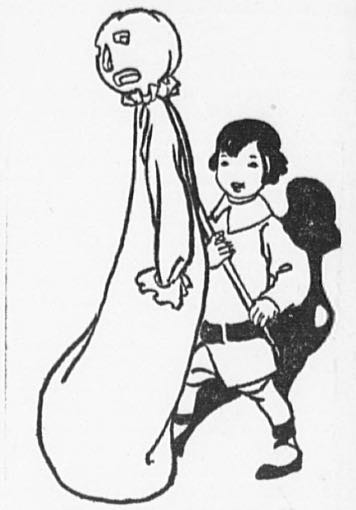
If you have the sewing skills, here are some descriptions of Halloween costume gowns for women in the late 1800s.

Halloween Costumes
Pretty Fanciful Gowns Suitable For The Festival
Halloween, perhaps more than any other fete, supplies possibilities for picturesque and effective gowns, and the end of the century girl is not the one to let them slip by.
A very fashionable wardrobe now owns, along with other dainty evening toilets, a Halloween supper frock, which may be made in any mode, but which, to be just the thing, should suggest, in some way, night itself. Tints vague and intangible, hinting of darkness or the white cool moon, are preferred over glaring dark colors.
As to ornament, there may be some curious jeweled night fly fastened somewhere, perhaps spangled in the hair: and if flowers are used, they too, must propitiate the powers of night in wanness and thick perfume.
The dread witches, who on All Halloween have the threads of fate in their keeping, are said to be difficult ladies to please, but somehow one hopes they will smile on the wearers of the three charming gowns here shown, and provide them suitable husbands. The originals of these dainty costumes, which were suggested by three famous French pictures, were all made by a nimble fingered New York girl for a Halloween supper. They are to be worn by herself and two sisters, three distinct types; along with their exceeding effectiveness, they have the merit of having involved comparatively little expense, being all fashioned from materials at hand, some lengths of a marvelous Chinese drapery, a few yards of thick liberty satin bought in better days, and a thin, scant old tambour muslin slip, relic of a long dead great-mamma and tea cup times.
For a Brunette
The first dress shown was for the dark, handsome elder sister of the little Cinderella dressmaker — the type that goes with stiffness and stateliness and rustling textures. It was of the liberty satin in a dim luminous tint, too blue for gray and too gray for blue, and that will show off the wearer’s rich matskin to perfection. The girdle drapery of graduating ribbon lengths and bows was of a faint dead sea rose color. This subtle and delightful tint, together with black, repeats itself in the simple but decorative embroidery at the bottom of the wide skirt. The tiny chemise gamp is of white mull, and the short balloon sleeves are stiffened with tarlatan. To be worn with the dress, as well as the next one, both of which were entirely uncrinolined, were petticoats of hair cloth, with tucks of large round organ pipe plaits, to hold the skirt out in the present approved fashion.
For Chatain Coloring
The second gown, though perhaps not quite so enchanting as the first, was more suggestive of the witcheries of Halloween. It was of the Chinese silk drapery, in tone copper red, and with a fantastic patterning of black bats. The girdle and low neck decoration are of black velvet, and square jet buckles fasten the latter down at intervals.
The very daintiest feature of this gown, however, which in style recalls somewhat little beflowered Dolly Varden, is the under sleeves, made to show off a rounded your arm and drive envy to the soul of womankind. For every woman who is a real woman has a weakness for lace, and these adorable under sleeves were made of the charming old net lace embroidery in back stitch of the long ago.
It came, like the tambour muslin, from grandmama’s garret, where when Halloween is over, it is to be hoped, it will be carefully put back.
A Gown For A Blonde
The third and last dress, a tiny hint of the Directoire period, is the tambour muslin slip itself, sinfully modernized. Once white, it is now evenly mellowed to a soft caressing yellow, which is further accented by a puffing of pure white chiffon about the neck and skirt bottom. The sleeves are of a rich heavy brocade, in black and white, and the belt and crescent ornaments are of silver.
This costume is to be worn to the supper by the little dressmaker herself, and its scant picture lines are sure to become her slim, shortlisted young figure.
And may the ghost of sweet dead grandmama not come back to reproach her for desecration.
Source: The Salt Lake Herald. Newspaper. October 28, 1894.

